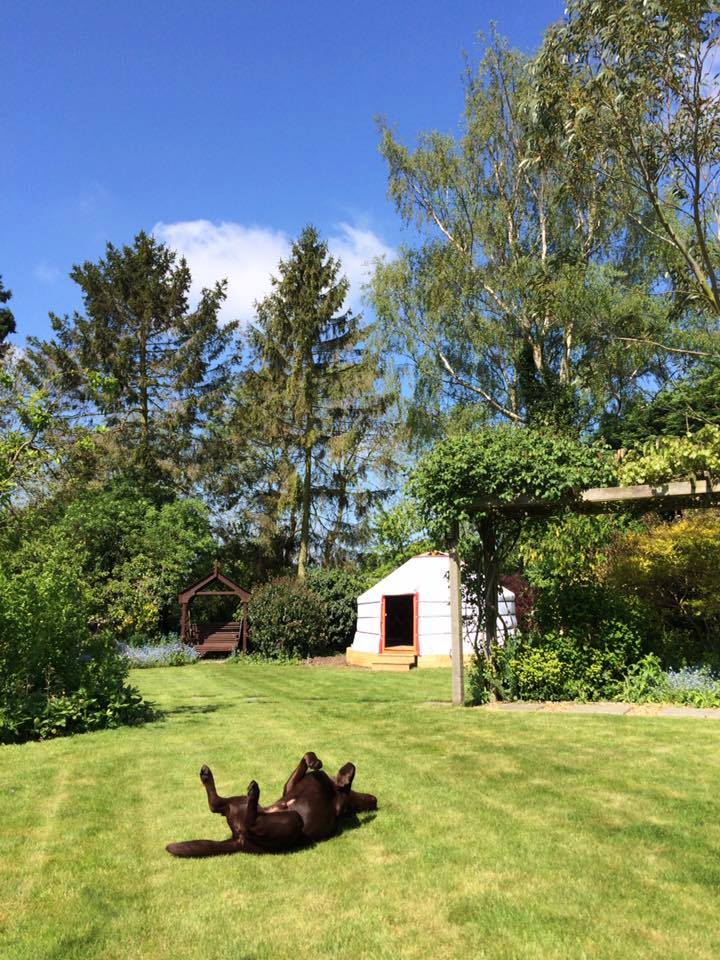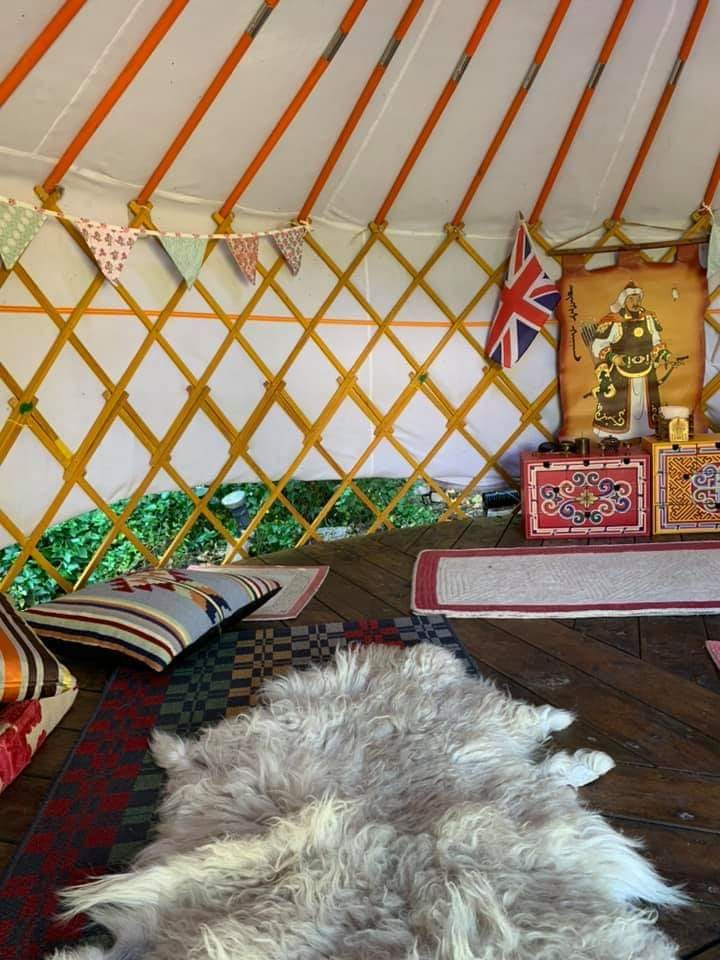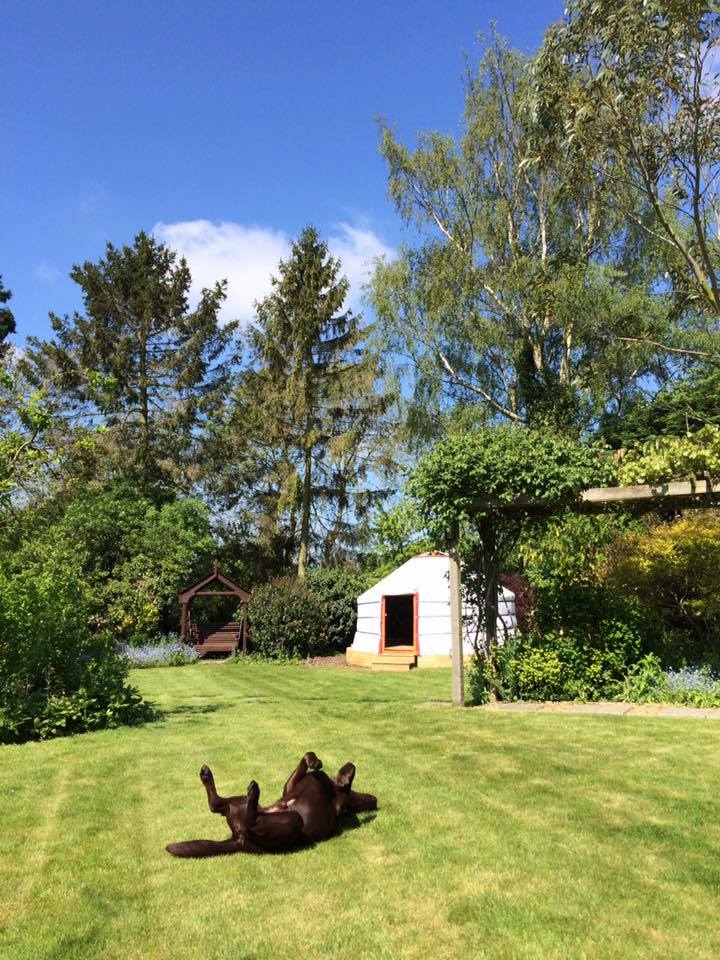Yurts have been a part of nomadic culture of Central Asia for centuries, but their unique design and practicality have captured the attention of people all over the world. These portable, circular dwellings have stood the test of time and continue to be a popular choice for outdoor enthusiasts and adventure seekers.
Yurt tents, inspired by traditional yurts, have also gained popularity in recent years as a modern alternative for camping and glamping. Let’s compare what are the advantages and disadvantages of both and which one you should choose.
Yurt vs Bell Tent

While they may seem similar in their basic purpose of providing a dwelling, there are several things to keep in mind, but let’s go over the similarities first.
Similarities:
The only two similarities are that they are both relatively easier to transport with a tipi like design and that you can use a stove inside, but other than that there are vast differences.
Differences:
- Yurts are mainly made from canvas
- Yurts have poles, dome, lattice, and a wooden frame
- Yurts are also a longer form of dwelling / shelter
- Yurts are larger and spacious with kitchen, living space, etc.
Advantages yurts have over bell tent yurts
The main advantages yurts have over bell tent is that usually they are warmer during the winter and also cooler during the summer due to its ingeneous infastructure.
They are also bigger and can be used as a long term living quarter out in the countryside even in colder climates and relatively portable than houses, cabins, containers etc.
Advantages bell tents yurt has over traditional yurt
Bell tents are much cheaper on the other hand are shaped more similar to a tipis and cost ranging between $500-$800.
However, yurt tent offers a more pleasant experience for camping and fits perfectly well inside the back of the trunk.
Depending quality, bell tent can be “more” waterproof than a canvas tent and significantly more portable.
However, bell tent yurts can accommodate only 4 or so people and just don’t have the same level of exotic coolness factor as yurts.
If you want something in between check out our yurt tent: https://silkroadmongolia.com/yurt-tent/
Yurt vs Wall Tent
While both provide comfortable and functional space for various purposes, they differ in terms of construction, design, and portability.
Yurts, originating from Central Asia, are round, semi-permanent structures made of a collapsible lattice framework covered with thick fabric or animal skin.
On the other hand, wall tents, also known as cabin tents, are rectangular, freestanding tents made of canvas or synthetic materials that resemble cabins or traditional homes.
The advantages and disadvantages are relatively the same as above.
Glamping Yurt Tent vs Regular Camping Tent

If you’re looking to go on a camping trip without worrying about the hassle of carrying bell tents and yurts, then a glamping yurt camping rental might a great outdoor experience.
While the yurt structure resemblances that of a traditional yurt, it comes with significantly better ventilation, wood stove, and other amneties. They idea is to fuse the experience of camping and great outdoors with modern yurts, thus glamping yurts.
You can fund such a campground in warmer countries in Europe and Western America.
Frequently Asked Questions
Here are some other commonly asked questions.
Are yurts better than tents? What’s the difference?
The superiority of yurts over tents depends on individual preferences and requirements. Here are some differences between yurts and tents:
1. Structure: Yurts are typically made of a collapsible wooden frame, covered with durable fabric such as canvas or felt. Tents, on the other hand, consist of a flexible framework of poles covered with lightweight water-resistant materials like nylon.
2. Size and Space: Yurts are generally larger than typical tents, providing more interior space. They often have high ceilings and can accommodate furniture, beds, and other amenities. Tents, especially backpacking or camping tents, are generally compact and offer limited space for occupants and their gear.
3. Durability: Yurts are known for their sturdy construction and ability to withstand harsh weather conditions. Tents are designed to be lightweight and portable, but they might not be as resilient in extreme weather or rough terrains.
4. Comfort: Due to their larger size and more rigid structure, yurts offer a more comfortable living space compared to tents. Yurts often have insulation and can be equipped with heating or cooling systems, making them suitable for year-round use. Tents typically provide more basic accommodations and may be less comfortable in extreme temperatures.
5. Portability: Tents are highly portable and easily collapsible, making them convenient for camping trips or for backpackers who frequently change locations. Yurts, while still movable, are more substantial and require disassembling and reassembling to relocate.
Is a yurt warmer than a tent? Camping in a yurt or canvas bell tent?
Yes, a yurt is generally warmer than a tent. Yurts have a insulated fabric covering and a solid structure, which helps to retain heat better than the thin walls of a tent. Additionally, yurts often have a stove or heater inside, which further increases the warmth and comfort level compared to a tent
What is the difference between a cabin and yurt?
A cabin is a traditional, permanent structure made of wood or log, typically found in rural or remote areas. It generally has a solid foundation, walls, and a roof, providing a sturdy and long-lasting shelter. Cabins are often equipped with basic amenities such as electricity, plumbing, and heating systems, and can be used for residential purposes.
On the other hand, a yurt is a portable, tent-like structure that originated from nomadic people in Asia. It consists of a collapsible lattice walls, usually made of wood, covered with felt or canvas. Yurts are easy to assemble and disassemble, making them highly portable and suitable for nomadic lifestyles. Due to their circular shape, yurts have a spacious and open interior with a domed roof, often featuring a skylight. They provide a unique and distinctive living space, although they are generally less sturdy and insulated than cabins.
Do glamping yurts have bathrooms?
Depending on the the glamping yurt rental, they can have not only bathrooms, but also wood stove to keep warm, bigge windows and doors to suit guests, etc. Bigger yurts can even accommodate over 10 people, but as I said, it mainly depends on the where and what type you choose.
Pacific yurts is one of the yurt manufacturers that offer portable yurts as well as easy to set up bell tent design, which you can check out on their website.

